Breadcrumb
Coho Salmon
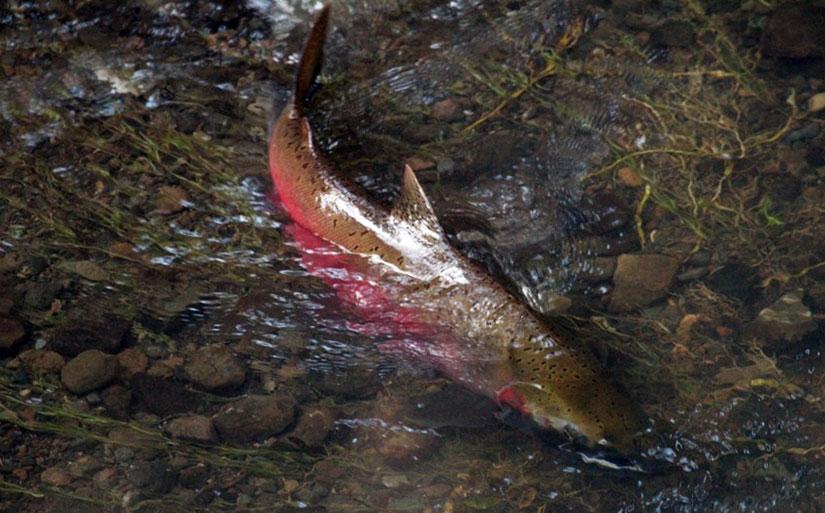
Coho Salmon (Oncorhyncus kisutch)
Coho salmon are one of three native anadromous salmonids that remain in the Russian River watershed. Coho populations along the Pacific Coast have been categorized into seven distinct Evolutionary Significant Units (ESUs) and Russian River coho are part of the Central California Coast (CCC) ESU, the southernmost population. Annual Russian River coho salmon runs were estimated at over 15,000 as recently as 1952, but by 2000 they were nearly extirpated from the system. CCC coho were listed as a threatened species in 1996 and upgraded to endangered in 2005.
In 2001, the Russian River Coho Salmon Captive Broodstock Program was formed to help restore a sustainable population of native coho salmon to the watershed. Nearly two decades later hundreds of coho are returning every winter.
- Life History
-
- Coho begin their lives as eggs hidden under gravel in a nest known as a redd and incubate for 30-60 days, depending on water temperature.
- After hatching they live in the gravel for 2-10 weeks and emerge as young of the year (yoy).
- Coho yoy remain in their natal creek for about a year, when they begin to prepare to return to the ocean.
- At this time, yoy become smolts through a process called smoltification in which their bodies undergo a series of physiological changes to prepare for the transition into salt water.
- Smolts migrate out to the ocean, stopping in the nutrient-rich estuary to feed along the way.
- They remain in the ocean for about 2 years, before returning to fresh water as 3-year old adults.
- There are exceptions where some fish return in their second year. These are usually precocious males called “Jacks”, but can also be females known as “Jills”.
- Coho rely on fall rains for access to spawning streams. Once in fresh water, coho stop feeding and their bodies change to prepare to spawn.
- Male and female fish pair up and the female digs a redd and lays her eggs, which can be fertilized by multiple males.
- Coho salmon die in a matter of days after spawning. The females will generally stay and guard over their redds, while the males may move on to search for more redds to fertilize. Their bodies provide essential ocean-based nutrients for many organisms, including their offspring!
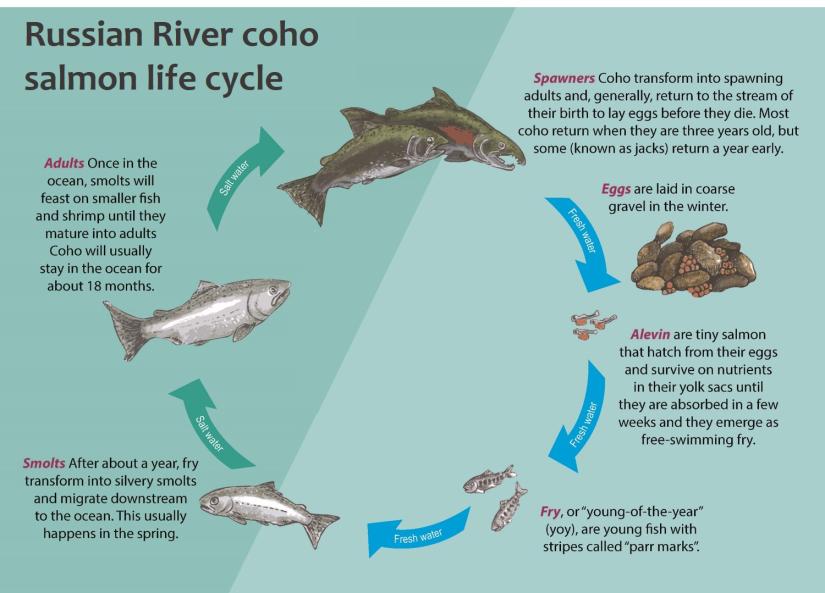
- Habitat
-
- Smaller coastal streams and tributaries to larger systems like the Russian River
- Needs:
- Cold (<20°C) clean, year-round water
- Diversity of instream habitats (riffles and pools)
- Complex cover like large woody debris and deep undercuts to hide in
- Abundance of spawning gravels with low amount of silt
- Densely-vegetated riparian corridors to provide shade, erosion control, nutrients and woody debris
- Low to moderate gradient streams without migration barriers
- Identifying Characteristics
-
Juveniles
- Sickle shaped anal fin, often with white leading edge
- No spots on their dorsal or caudal fins
- Large, clear eye with no markings on the perimeter
- Parr marks are tall and slender with more space in-between than steelhead
- Smolts lose their parr marks and turn silver
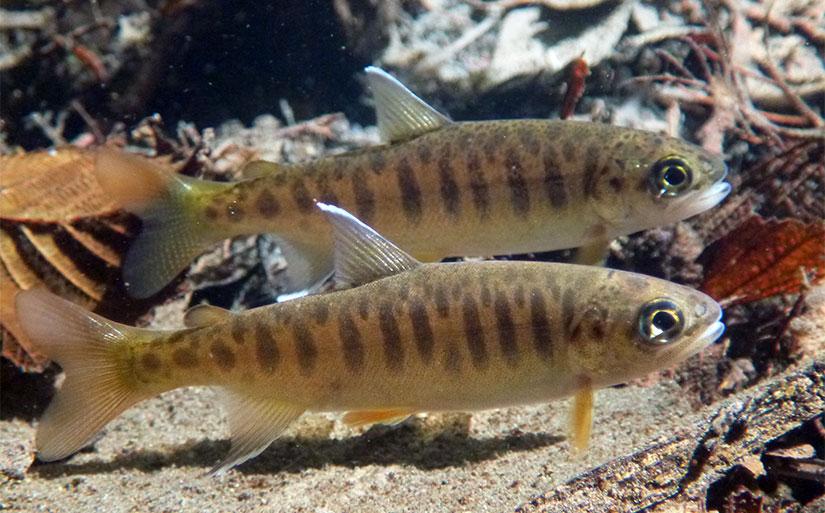
Coho salmon young-of-the-year (yoy) 
Coho salmon smolt Adults
- Silver sides while at sea, with blue green back
- Roundish spots on their back, dorsal fin and top of their caudal fin
- Mouth is dark with a white gum line at base of teeth
- Males in spawning phase develop a hooked jaw called a “kype”
- Both sexes change colors during spawning to have dark heads and increased red pigment on their sides, more pronounced in males
- Typically grow to 60 cm and weigh between 7-11 pounds
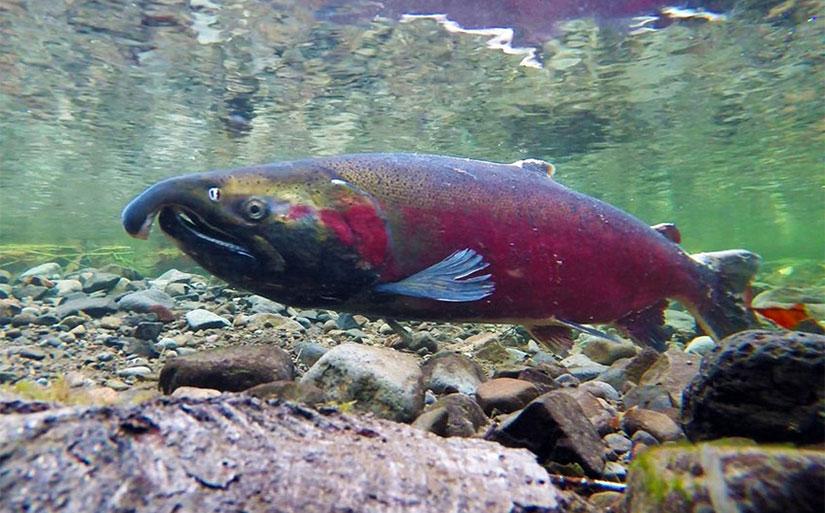
Adult coho male in spawning phase 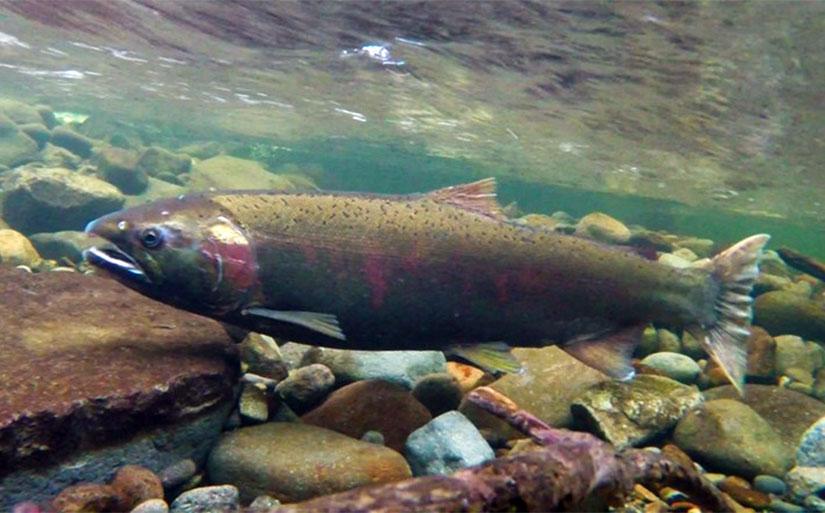
Adult female coho in spawning phase - Fun Facts
-
- Coho salmon naturally have the widest range of any salmon. Historically they were found in coastal streams from North Korea all the way to California!
- After sockeye, coho spend the most time in fresh water of all salmon species
- References and Recommended Readings
-
- Fishes of California, California Department of Fish and Wildlife
- Groot, C., & Margolis, L. (1991). Pacific salmon life histories. Vancouver: UBC Press.
- McGinnis, S. M., & Alcorn, D. (2006). Field Guide to Freshwater Fishes of California.
- The Behavior and Ecology of Pacific Salmon and Trout
- California Fish